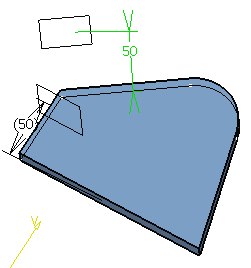Double-click the radius constraint.
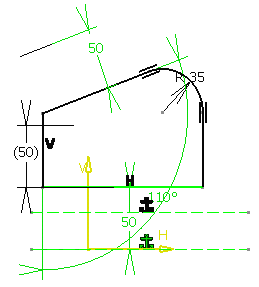
The Constraint Definition dialog box appears.
Select the Reference check box to make the constraint a
reference .
The Radius field is deactivated, indicating that the
value is now driven by modifications to the sketch.
Using the Reference mode, the offset value is displayed
between brackets indicating this mode and measured from the
component locations. When the offset constraint supporting elements
are two non-parallel lines or the offset constraint is
over-constrained, the offset value cannot be measured, the
constraint is invalid, any value is displayed and two pound signs
are displayed between the brackets (##).

Click OK to confirm.
The radius value is displayed in brackets in the geometry area.
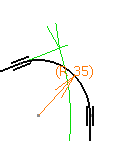
Double-click the angle constraint corresponding to 110 degrees.
The Constraint Definition dialog box appears.
Type 125 deg and click OK.
The new value is displayed in the geometry area. It affects the
angle. The sketch shape is also modified due to the radius
previously converted into a measure.
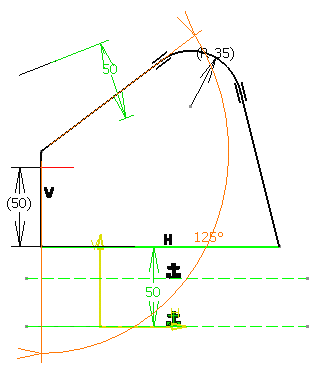
Double-click the Offset.xxx constraint.
The Constraint Definition dialog box appears.
Click the More button to access additional information.

Click the Line.xxx component.
The related geometry is highlighted.
Click Reconnect... to redefine the constraint component.
Select Line.6 and type 52mm in the Value field.
Click OK.
The position of the profile is modified accordingly.
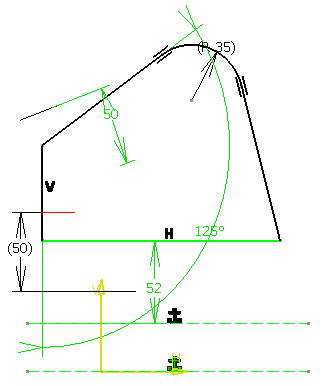
Exit the Sketcher.
The application has integrated the modifications to the sketch.
